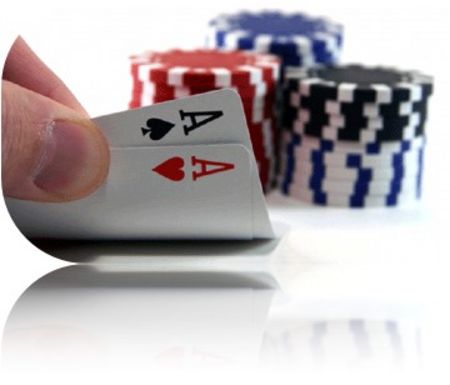Tight vs. Loose Players

One of the most important things you can do at the table is distinguish between the
good players and the weak players. To take this further, you should distinguish
between tight/loose and aggressive/conservative.
When a tight player enters the pot preflop, you should call less often, especially if
they have raised. On the other hand, you can play more hands against loose
opponents. For example, if a loose player raises in early position, I might be more
inclined to play AQ than I would against a tight player- When your opponents play
poorly after the flop, you can also play more hands since they will pay you off more
when you hit a good hand.
After the flop, be very selective when you try to bluff loose players. They tend to call
a lot even with weak hands, so it is difficult to get them to fold a hand. If they are
also aggressive, you can try to induce bluffs from them since they are always trying
to bet and win the pot. On the other hand, tight players will fold their weak hands
and sometimes even top pair with a weak kicker, so bluffs and semi-bluffs have a
better chance of success. Inducing calls is also a good strategy against tight
opponents since they will probably fold to a bet with any kind of weak hand.
Aggressive vs. Conservative Players
Another important characteristic to look for in your opponents is whether they are
aggressive or conservative. Aggressive players tend to raise a lot and will try a lot
of deceptive plays. These players will often bluff whenever they are given an
opportunity. On the other hand, rocks and conservative players tend to only raise
with their very strong hands. You usually do not need to worry about them bluffing
very often. For example, a check-raise on the rum from a rock is very dangerous!
Tend to call or raise your borderline hands against the aggressive tricky players and
fold these hands against the, rocks or conservative players.
A good general strategy to employ after the flop is to play aggressively against tight
opponents and conservatively against loose opponents. Try to bluff your tight
opponents out of the pot. When you have a very strong hand and an aggressive
loose player is betting, sometimes you should just let them continue betting rather
than drive them out of the pot. Waiting to raise the turn or even the river is
especially effective against these players. With medium hands against these
opponents, sometimes you should raise when you feel you have the best hand to
ensure they pay a higher price for their draws. Observe your opponents and choose
the best strategy that counter-acts each opponent's playing style.
Contrasting Playing Styles
One important note about tight versus loose players. A player's style can be
different after the flop than it is preflop. For example, some advanced players play a
lot of hands, but their post-flop play is excellent. Also, some tight players fall in love
with their starting hands and tend to play too loosely after the flop. Be sure to
identify each opponent's tendencies.
NEXT...
Position Relative to Your Opponent

